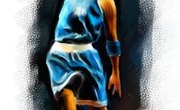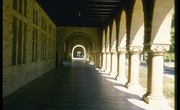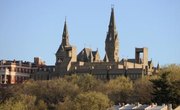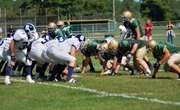If you want a liberal arts education, a good place to start your college application process is by looking at the Little Ivy League colleges, or "Little Ivies." This is a colloquial term for a group of small, selective liberal arts colleges in the United States, such as Amherst College and Wesleyan University. The "Little Ivies," which may also be referred to as "Baby Ivy" or "Mini Ivy" schools, are so-called because they are believed to share similarities with the universities of the Ivy League, like Yale and Princeton.
What Are Little Ivy League Schools?
The Little Ivies aren't part of an official organization, but they are usually old, small, exclusive and academically competitive liberal arts colleges in the northeastern U.S. A liberal arts education is designed to improve general knowledge and develop intellectual ability rather than focus on professional or vocational skills for a specific career. Liberal arts programs hone students' skills in written and verbal communication, problem solving and teamwork.
The Little Ivies may be split into three groups: the Little Three, the New England Small College Athletic Conference (NESCAC) and the Hidden Ivies.
The Little Three
The Little Ivy colleges known as the "Little Three" are Massachusetts's Williams College and Amherst College and Connecticut's Wesleyan University. Williams College was established in 1793 and had around 2,000 students in 2019. Notably, the school meets 100 percent of the financial aid for students who demonstrate financial need. Students can choose from 36 majors across three academic divisions: languages and the arts, social sciences and science and mathematics.
Amherst College, which was founded in 1821, offers more than 850 courses across 40 majors in the arts, humanities, natural sciences and social sciences. As of 2019, 1,849 students were enrolled at Amherst, with an equal split between men and women. Within the student body, 45 percent self-identify as students of color.
The largest of the Little Three, Wesleyan University, which was founded in 1831, has around 3,000 undergraduate and 200 graduate students. Students can pursue a Bachelor of Arts, Master of Arts, Master of Arts in Liberal Studies, Master of Arts in Performance Curation, Master of Philosophy in Liberal Arts and doctoral degrees.
The NESCAC Schools
The NESCAC is a National Collegiate Athletic Association Division III athletic conference consisting of 11 liberal arts schools in New England and New York that have competed against each other since the 19th century. These schools, which are extremely selective, include Bates College and Tufts University as well as the Little Three.
Bates College in Maine has 2,000 students, 22 percent of whom are from underrepresented groups. Bates was the first coeducational college in New England, and some of its first students were former slaves.
Tufts University was established in Massachusetts in 1852 and has more than 11,000 undergraduate and graduate students. The Tufts motto is "Pax et Lux," which is Latin for "peace and light."
The Hidden Ivies
The Hidden Ivies are the renowned academic institutions featured in the guidebook "The Hidden Ivies: 63 of America's Top Liberal Arts Colleges and Universities." As of 2019, the book is in its third edition and highlights 63 less well-known liberal arts colleges across the U.S., including midwestern, southern and western states that rival or emulate the Ivy League schools. Recent additions to the book include Pennsylvania's Dickinson College and New York's Fordham University.
Dickinson College was founded in 1783 and has 2,345 full-time students pursuing Bachelor of Arts and Bachelor of Science degrees. In the 2017-18 academic year, the school awarded more than $52.8 million in grants, and 72 percent of its students received merit- or need-based aid.
Established in 1841, Fordham University is a Jesuit school with 15,582 students, including 9,258 undergraduates. Fordham conferred 10 different degrees in 2016, including the Doctor of Philosophy, the Juris Doctor and Master of Arts, Science, Education, Law and Philosophy.
Related Articles
References
Writer Bio
Claire Gillespie has been writing and editing for 18 years. She has written about high school and higher education for private clients and various websites, including SheKnows and Reader's Digest.








